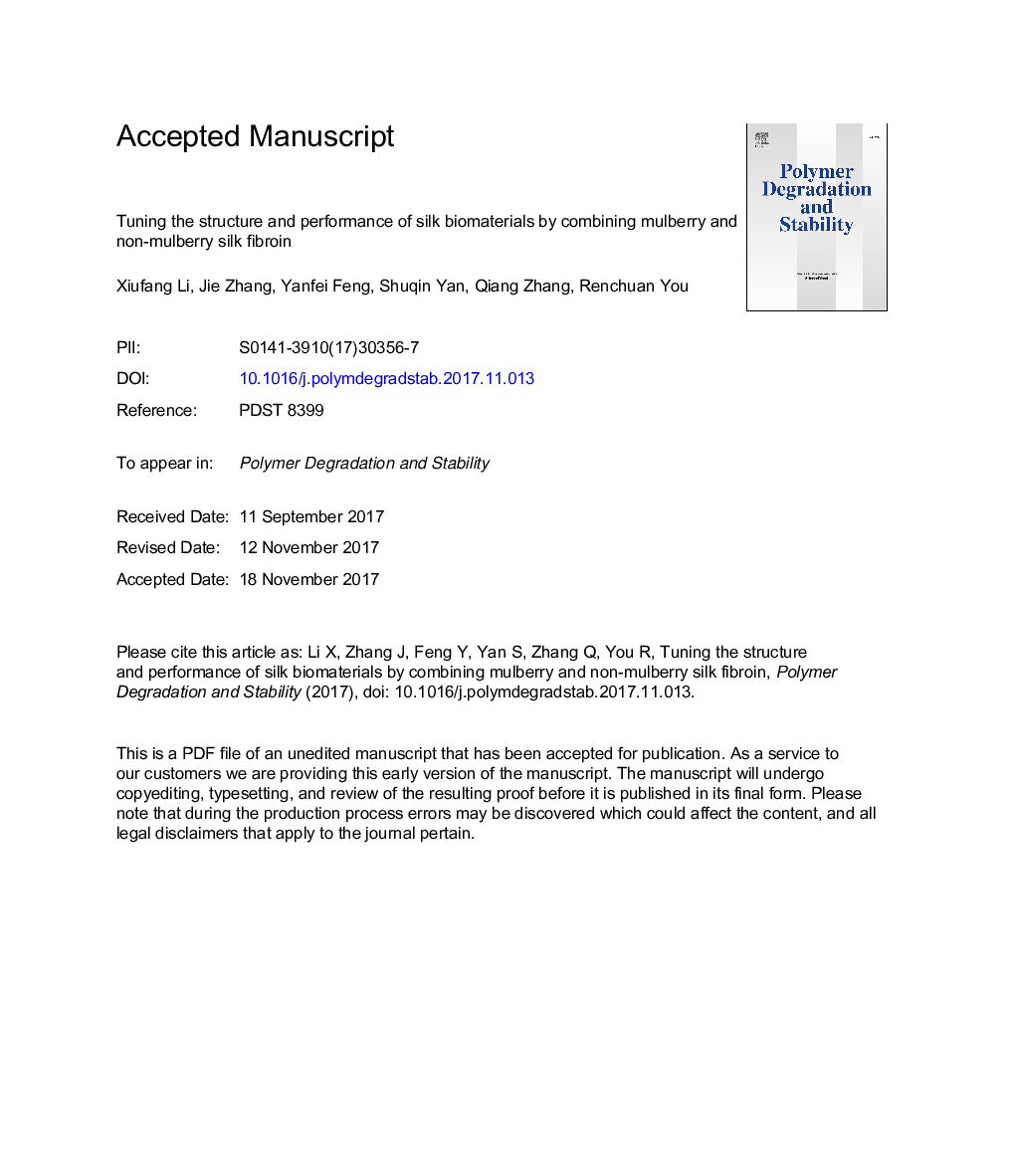| Article ID | Journal | Published Year | Pages | File Type |
|---|---|---|---|---|
| 7824190 | Polymer Degradation and Stability | 2018 | 30 Pages |
Abstract
Despite considerable efforts toward the biomedical applications of silk fibroin (SF), detailed control of structure and performance in silk biomaterials remains a major challenge. Silks are classified as mulberry and non-mulberry, which are produced by domesticated Bombyx mori and wild silkworm species, respectively. To achieve silk biomaterials with tunable performance, Bombyx mori silk fibroin (BSF) and non-mulberry Antheraea pernyi silk fibroin (ASF) were blended. These systems exploit the beneficial material and biological properties of both silk proteins. The sol-gel transition of ASF was much more rapid than that of BSF. Consequently, the gelation rate of SF solution could be controlled ranging from tens of minutes to days by changing the ASF ratio, providing useful options for the fabrication of silk hydrogels. Raising BSF ratio in the blend materials significantly increased mechanical performance, overcoming the inherent lack of mechanical performances of regenerated ASF materials. Conversely, increasing ASF ratio significantly enhanced degradability of the blend films, providing a wider range of regulation for the degradation rate of silk biomaterials. As a result, this simple blending strategy enables the process to be more controllable and flexible, controlling the performance of silk protein becomes feasible, and this would greatly expand the applications of silk as a biomedical material.
Related Topics
Physical Sciences and Engineering
Chemistry
Organic Chemistry
Authors
Xiufang Li, Jie Zhang, Yanfei Feng, Shuqin Yan, Qiang Zhang, Renchuan You,
